Month: May 2011
Eugène Leroy (1919-2000) was introduced to the Dutch Old Masters Rembrandt and Jordaens as a teenager, and later to El Greco and Goya. From 1931 to 1932 he studied at the École des Beaux‑Arts in Lille and Paris, but he quickly decided that the methods and approaches of the academies did not correspond with his understanding of art. He moved to Roubaix, where he worked as a Latin and Greek teacher. He consistently pursued his painting during this time. In 1936 he saw “The Jewish Bride” by Rembrandt in the Amsterdam Rijksmuseum and the abstraction of materiality and the flesh were to fascinate him throughout his life. He had his first exhibition in Lille in 1937. He continued to teach during World War II. His post-war works are characterized by dark colors and have a strong connection to the North Sea. This style of painting was thematically interrupted by a crucifixion scene that he created for a chapel in Roubaix in 1946-48. In 1954 he exhibited with Sam Francis, Serge Poliakoff and Marcel Pouget. His first solo exhibition took place at the Tourcoing Museum in Dunkirk in 1956. Leroy’s move to Wasquehal in 1958 is clearly evident in his œuvre, as there is a noticeable shift in his compositions towards more abstraction. From 1955-70 he exhibited in the May Salon in Paris. Numerous exhibitions followed, and the 1988 retrospective in the Musée d’Art Moderne de la Ville de Paris deserves special mention. In 1992 he took part in the documenta IX in Kassel and in 1995 in the Venice Biennale.
Leroy died 2000 in Wasquehal.
Exhibitions and Distinctions (Selection)
2022
Hall Art Fondation, Kunstmuseum Schloss Derneburg, Holle, Germany
2021
MUBA, Tourcoing, France
2009
Donation of 600 works to the Musée des Beaux-Arts de Tourcoing
2004
Musée d’Art et d’Industrie, La Piscine, Roubaix
2001
Musée d’Art Moderne, Villeneuve d’Ascq
2000
Art Association for Rhineland and Westphalia, Dusseldorf.
Albright-Knox Art Gallery, Buffalo (NY)
1997
Kunsthalle Basel
1996/97
Retrospective at Centre díArt Contemporain Bignan, Centre díArt Contemporain Rennes and Musée des Beaux-Arts de Rennes
1996
Grand Prix National de la Peinture
1995
45th Venice Biennale
1994
Galerie Daniel Blau, München
1993
Musée d’Art Moderne et d’Art Contemporain, Nice
1992
Documenta IX, Kassel
1991
Participation at 21st Sao Paolo Biennale
1987
Musée d’Art Moderne, Villeneuve d’Ascq
1988
Stedelijk Van Abbemuseum, Eindhoven
Musée d’Art Moderne de La Ville de Paris
1982
Museum van Hedendaagse Kunst, Gent
1977
Ecole des Beaux-Arts, Lille
1970
Wiener Sezession, Wien
1960-65
Collaboration with Claude Bernard Gallery, Paris
1957
Prix Emile-Othon Friesz
1956
Musée des Beaux-Arts, Tourcoing
Literature (Selection)
Eugène Leroy – Alles ist Farbe, ed. by Kunstverein für die Rheinlande und Westfalen, Dusseldorf, 2000
Bernard Marcadé, Eugène Leroy, Paris, 1999
Eugène Leroy – Peintures, ed. by Kunsthalle Basel, 1997
Hector Obalk, Eugène Leroy – Oil Paintings, Tokyo 1991
Eugène Leroy – Bilder und Zeichnungen, ed. by Galerie Daniel Blau, Munich, 1994
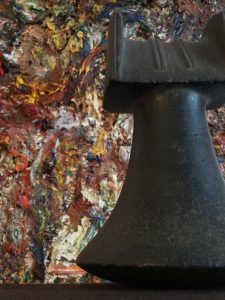
Freud is one of the most widely acclaimed British artists of our time; »Lucian Freud: Portraits«, with plentiful illustrations and essays by celebrated curator Sir Norman Rosenthal, brings Freud’s lesser-known etchings deservedly to the forefront of our appreciation of his art.
Lucian Freud, one of the foremost figurative artists working today, has redefined portraiture and the nude through his unblinking scrutiny of the human form. While most of his admirers are familiar with Freud’s thickly impasted paintings, few realise how integral etching has become to his art. This volume features principally his portraits executed as etchings. It presents an exceptional overview of Freud’s works on paper over a career that spans more than 60 years and highlights the artist’s unconventional approach to the printing medium. Standing the copper etching plate upright on the easel, Freud treats the plate like a canvas as he portrays his sitters – very often friends, family members, or fellow artists – by creating meticulous networks of finely etched lines. Among Freud’s most notable trademarks is his tendency to dramatically crop figures, isolating them against empty backgrounds. This juxtaposition creates a startling sense of psychological tension and formal abstraction.
Introductory essay by Norman Rosenthal.
This publication was produced to accompany the exhibition ‘Lucian Freud: Portraits‘ at Galerie Daniel Blau, Munich, May 5 – June 3, 2011.
76 pages, 27 colour illustrations, illustrated bibliography
24 × 28 cm, hardcover
Published by Hirmer Verlag/Daniel Blau(ed.) 2011. Printed in Italy.
ISBN: 978-3-7774-3971-6
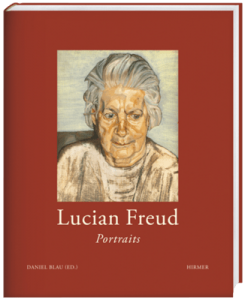
Chuck Close was born 1940 in Monroe,Washington. In 1962 he received his B.A. from the University of Washington, Seattle, and in 1964 his M.F.A from Yale University, New Haven. After a Fulbright grant in Vienna he worked as an art teacher at the University of Massachusetts. A spinal artery collapse in 1988 left Close almost completely paralyzed. He lives and works in New York.
Solo Exhibitions (Selection)
2010
Chuck Close: Portraits,Virginia Museum of Fine Arts, Richmond,Virginia
Chuck Close: Prints: Process and Collaboration, Scottsdale Museum of Contemporary Art, Scottsdale
2009/10
Familiar faces: Chuck Close in Ohio Collections, Akron Art Museum, Ohio.
Faces, Chuck Close and Contemporary Portraiture, Nevada Museum of Art, Nevada
2008
Chuck Close: Seven Portraits, The State Hermitage Museum,Winter Palace, St. Petersburg
2007
Chuck Close: Portaits 1996-2006, Ludwig Forum für Internationale Kunst, Aachen
2003/10
Chuck Close Prints: Process and Collaboration: Bluffer Gallery, University of Houston; travelled to: Metropolitan Museum of Art, New York; Knoxville Museum of Art; Modern Art Museum of Fort Worth,Texas; Boise Art Museum, Idaho; Portland Art Museum,Oregon; Sungkok Museum of Art, Seoul; San Jose Museum of Art, California; Scottsdale Museum of Contemporary Art,Arihona; Corcoran Gallery of Art,Washington
1998/99
Travelling exhibition:The Museum of Modern Art, New York; Museum of Contemporary Art, Chicago; Hirshhorn Museum and Sculpture Garden, Washington; Seattle Art Museum, Seattle; Hayward Gallery, London
1997
Chuck Close, Large Polaroids 1984-1995, Galerie Daniel Blau, Munich
1993
A Print Project by Chuck Close,The Museum of Modern Art, New York “6th Annual Infinity Award of Art”, International Centre of Photography Travelling exhibition:Art Institute of Chicago;The Friends of Photography, Ansel Adams Cent
1984/85
Chuck Close, Paper Works: Herbert Palmer Gallery, Los Angeles; Spokane Center of Art, Cheney,Washington; Milwaukee Art Museum; Columbia Museum, South Carolina
1980/81
Close Portraits, travelling exhibition:The Walker Art Center, Minneapolis; St. Louis Art Museum, Missouri; Museum of Contemporary Art, Chicago;Whitney Museum of American Art, New York
1976
Baltimore Museum of Art, Maryland
1975
Chuck Close: Keith: travelled to Mint Museum of Art, Charlotte, North Carolina; Phoenix Art Museum,Arizona;The Minneapolis Institute of Art, Minnesota
1972
Museum of Contemporary Art, Chicago
1970
Bykert Gallery,NewYork
Literature (Selection)
Christopher Finch, Chuck Close: Life, Munich, 2010
Christopher Finch, Chuck Close: Work, Munich, 2007
Chuck Close: Pinturas 1968/2006, ed. by. Museo Nacional Centro de Arte Reina Sofía, Madrid 2007
Martin Friedman, Close Reading: Chuck Close and the Art of the Self-Portrait. New York,2005
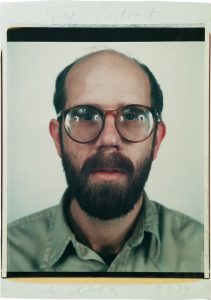
Bisson Frères
Louise-Auguste Bisson (1814-1876) was a 19th century French photographer. He opened a photographic studio in 1841 and soon after this he was joined as a partner by his brother Auguste-Rosalie Bisson (1826-1900). Together, these pioneering photographers became known as the Bisson Frères.
They were active during a rich time of photographic sponsorship and were able to develop processes for creating very large prints (such as the Collodion process, with large negatives) and for taking on important commercial projects. During the 1850s they employed up to thirty employees.
The Bisson brothers were members of the French Society of Photography. They travelled avidly, and a significant number of their many pictures were taken outside of French territory. They are perhaps best remembered for their series of photographs on the Savoy Alps, commissioned by Napoleon III in 1860.
The Bisson Frères also gained recognition for their wide range of photographic styles and for the best-known portrait of of Honoré de Balzac (1842).
Selected exhibitions:
2014
“Impressionist France: Visions of Nation from Le Gray to Monet”, Saint Louis Art Museum,
Saint Louis, USA
2007
“Johnson Gallery, Selections from the Collection 44”, The Metropolitan Museum of Art, New York, USA
2005
“Master Photographs from the Gilman Collection: A Landmark Acquisition”, The Metropolitan Museum of Art, New York, USA
2002
“As It Happened: Photographs from the Gilman Paper Company Collection”, The Metropolitan Museum of Art, New York, USA
1994
“The Waking Dream: Photography‘s First Century, Selections from the Gilman Paper Company Collection”, National Gallery of Art, Washington D.C, USA
1993
“The Waking Dream: Photography‘s First Century, Selections from the Gilman Paper Company Collection”, Edinburgh International Festival, Edinburgh, Scotland

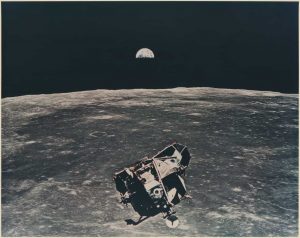
Andy Warhol is arguably the best-known artist of the second half of the 20th century. His works Double Elvis, Gold Marilyn and his Campbell’s Soup Cans are iconic. In 2011 a batch of drawings from the 1950s –the first decade Warhol spent in New York – was discovered among the works he left in his estate. In these early drawings Warhol establishes a precedent for his subsequent work. We come across: Portraits, Flowers, Guns, Car Crashes and Famous People. Through these drawings we see Warhol as a sensitive and ingenious draftsman.
He was particularly inspired by the blossoming magazine culture and its pictorial language. Extensive research by Daniel Blau has now identified the majority of the sources he used for his 1950s works. Warhol drew a large number of subjects from the world-famous LIFE magazine.
Selected Exhibitions
2019
“Andy Warhol-From A to B and Back Again”, SFMOMA, San Francisco, USA
“Contact Warhol: Photography Without End”, Cantor Arts Center, Stanford, USA
2019
“Andy Warhol: By Hand (Drawings 1950s-1980s)”, New York Academy of Art, New York, USA
2018
“Andy Warhol-From A to B and Back Again”, Whitney Museum of American Art, New York, USA
2015
“Andy Warhol: Campbell’s Soup Cans and Other Works 1953–1967”, The Museum of Modern Art, New York, USA
“YES!YES!YES! Warholmania”, Museum Brandhorst, Munich, Germany
“From Marilyn to Mao: Andy Warhol‘s Famous Faces”, Columbia Museum of Art Columbia, USA
“Andy Warhol and William Morris”, Modern Art Oxford, Oxford, England
“Pop To Popism”, Art Gallery of New South Wales, Sydney, Australia
“Transmitting Andy Warhol”, Tate Liverpool, Liverpool, England
2014
“Andy Warhol: Death and Disaster”, Kunstsammlungen Chemnitz, Chemnitz, Germany
“Audubon to Warhol: The Art of American Still Life”, Philadelphia Museum of Art,Philadelphia, USA
“From Photo to Print. Prints from Andy Warhol to Gerhard Richter”, Museum Folkwang, Essen, Germany
“SUPERPOP!”, Serlachius Museum Gosta, Mantta, Finland
“Andy Warhol: Life, Death and Beauty”, Beaux-arts Mons, Mons, Belgium
2013
Pinakothek der Moderne, Munich
2013
Teylers Museum, The Netherlands
2013
Louisiana Museum, Denmark
2009
Grand Palais, Paris
2000
Lousiana Museum, Humlebaek
1999
Large travelling exhibition at Kunsthalle Hamburg; the Andy Warhol Museum, Pittsburgh; International Center for Photography, New York
1993
Kunsthalle, Basel
1989
Travelling exhibition at Carnegie Museum of Art, Pittsburgh; University of Pennsylvania-Institute of Contemporary Art, Philadelphia; Serpentine Gallery, London; Newport Harbor Art Museum, Newport Beach; Fondation Cartier pour l’Art Contemporain, Jouy-en-Josas
1981
Museum of Modern Art, Vienna
1979
Whitney Museum of American Art, New York
1977
Museum Folkwang, Essen
1972
Walker Art Center, Minneapolis
1970
Travelling exhibition at Pasadena Art Museum; Museum of Contemporary Art, Chicago; Stedelijk Museum Eindhoven; Musée d’Art Moderne de la Ville, Paris; TheTate Gallery, London; Whitney Museum, NewYork
1966
The Velvet Underground is formed
1963
The Factory is founded
1962
First Campbell’s Soup and Coca Cola screen-print series, exhibited at Ferus Gallery, Los Angeles. Participation at The New Realists, Janis Gallery, New York
1956
Thirty Fifth Annual Art Director’s Club Award for his commercial shoe drawings
1952
Hugo Gallery: Fifteen Drawings based on the Writings of Truman Capote
Literature (Selection)
From Silverpoint to Silver Screen – Andy Warhol 1950s Drawings ed. Daniel Blau, published by Hirmer January 2013
Andy Warhol – Zeichnungen 1942-1987, ed. The Andy Warhol Museum Pittsburgh, 2005
Andy Warhol – Catalogue Rainsonné Vol. 2 (Paintings and Sculptures 1964-69), Georg Frei, Neil Printz, London, 2004
Andy Warhol – Catalogue Rainsonné Vol. 1 (Paintings and Sculptures 1961-63), Georg Frei, Neil Printz, London, 2002
Warhol Pre-Pop, Jesse Kornbluth, München, 1989
Andy Warhol – Das zeichnerische Werk 1942-1975, ed. by Württembergischer Kunstverein, Stuttgart, 1976
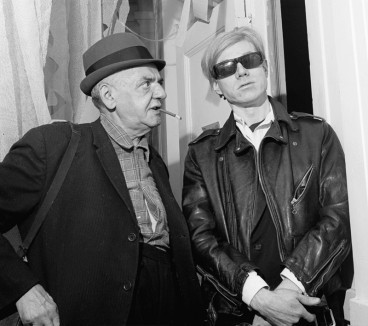
Stephanie von Reiswitz
Munich-born and very much immersed in the London universe, Stephanie von Reiswitz depicts surreal tales of past glories and tragedies, while rendering through her sombre colours and shapes an aesthetic reminiscent of the Weimar Republic.
Chris Bianchi
A self-invented Maltesian, Chris Bianchi’s somewhat surreal ideas are rendered in landscapes where new perspectives lead onto more and the viewer will find their mind pleasantly boggled.
Robert Rubbish
A unique Londoner and notorious Soho character, Robert Greene (a.k.a. Robert Rubbish), comprises half of the Victorian punk revivalist duo, the Rubbish Men, and shares generously a slice of his world through an adventurous synthesis of drawings and writing.
Bill Bragg
An illustrator with an appreciation for the deeper shades that a pencil can afford, this Englishman depicts fragmentary tales of mystery and conjures unlikely characters in a beautifully noir-esque style.
Neal Fox
Neal Fox was born 1981 in London, studied graphic design at Camberwell College of Art and illustration at the Royal College of Art in London. Fox is co-founder of LE GUN, an illustrative collective and their publication of the same name. He lives and works in London.
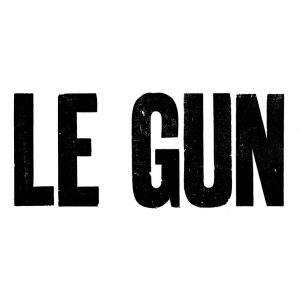
October 10, 2008 – November 9, 2008
On the occasion of Munich Highlights, Galerie Daniel Blau is presenting unique photographs by the artist Adam Fuss, who was born in Londonin 1961 and now lives in New York. The works have never been shown before. The art of Adam Fuss fetches record prices at auctions and he is represented at galleries of international renown, making him one of the top stars of the photography scene. We are particularly proud tohave the privilege of presenting these works to the public for the first time in Munich.
His early large-format series Proto Spirals focuses on circles and spirals. Foreground and background seem to dissolve as the individual circles superimpose, the separate forms coalescing and disengaging again, timeless but without appearing motionless. At the same time, they seem so light and filigree that they could break at any moment.
The direct positives are made by simple exposure in a dark room: a small, freely hanging lamp is set in motion, swinging like a pendulum on a string and directly drawing its path onto the photographic paper beneath. Gravity causes the concentric oscillations to become smaller and smaller, appearing as spirals after developing.
Penck was born in Dresden, Germany in 1939 as Ralf Winkler. In his early teens he took painting and drawing lessons with Jürgen Böttcher, known by the pseudonym Strawalde, and joined with him to form the renegade artists’ group Erste Phalanx Nedserd (Dresden spelled backward). He later worked for a year as a trainee draftsman at the state advertising agency in Dresden. After failing to gain admission to the fine-arts academies in Dresden and East Berlin, Penck worked for several years as a stoker, a newspaper deliverer, a margarine packer and a night watchman.
Penck later studied together with a group of other neo-expressionist painters in Dresden. He became one of the foremost exponents of the new figuration alongside Jörg Immendorff, Georg Baselitz and Markus Lüpertz. Under the East German communist regime, they were watched by the secret police and were considered dissidents. In the late 1970s they were included in shows in West Berlin and were seen as exponents of free speech in the East. His work was shown by major museums and galleries in the West throughout the 1980s.
Penck first attracted attention with a series of paintings and sculptures, made in the 1960s and early 1970s, that he called Standarts, a conflation of “standard” and “art”, with an echo of the German word for banner or flag, Standarte. In the 1980s he became known worldwide for paintings with pictographic, neo-primitivist imagery of human figures and other totemic forms.
Penck’s sculptures, though less familiar, evoke the same primitive themes as his paintings and drawings. They use common everyday materials such as wood, bottles, cardboard boxes, tin cans, masking tape, tinfoil, and wire, and are crudely painted and assembled.The sculptures are often reminiscent of the stone heads of Easter Island and other Oceanic art.
After leaving East Germany, Penck settled in Kerpen, southwest of Cologne, but in 1983 he moved to London. He later relocated to Dublin. At the time of his death, Penck lived and worked in Berlin, Düsseldorf, Dublin and New York City.
Penck died on 2 May 2017 in Zürich at the age of 77.
Exhibitions (Selection)
2022
A.R. Penck, Museum Jorn, Silkeborg, Denmark
2022
A.R. Penck, Museo d’arte Mendrisio, Switzerland
2020
A.R. Penck, Kunstmuseum Den Haag, Den Haag, The Netherlands
2019
A.R. Penck – „Ich aber komme aus Dresden (check it out man, check it out).”, Albertinum Dresden, Dresden, Germany
2019
A. R. PENCK: I THINK IN PICTURES, Ashmolean Museum, Oxford, UK
2017
A.R. Penck – Rites de passage, Fondation Marguerite et Aimé Maeght, Saint‑Paul-de-Vence, France
2015
A. R. Penck – System, Signal, Störung, Staatliches Museum für Kunst und Design, Nürnberg, Germany
2013
A. R. Penck – Eine Retrospektive, Kunstakademie Düsseldorf, Germany
2011
A.R. Penck – Holzschnitte, Radierungen, Lithographien, Kunstmuseum Heidenheim, Heidenheim, Germany
2010
A.R. Penck, Vergangenheit, Gegenwart, Zukunft, Museum Ludwig, Cologne, Germany
Literature (Selection)
A.R. Penck—Retrospektive, ed. by Ingrid Pfeiffer und Max Hollein, Frankfurt Düsseldorf, 2007
A.R. Penck—Konfessionen, Bilder 1988-1995, ed. by Christian K. Scheffel, Bad Homburg, 2000
A. R. Penck—Holzschnitte 1966-1995, ed. by Städtisches Kunstmuseum Spendhaus, Reutlingen, 2004
A.R. Penck, A.R. Penck—Zeichungen 1958-1985 Frauen Skulpturen Abstraktes, Bern, 1986
A. R. Penck—Zeichnungen bis 1975, ed. by Kunstmuseum Basel, 1978
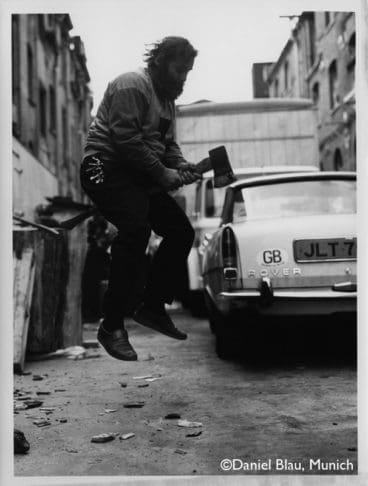
Matt Mullican was born 1951 in Santa Monica, California. He studied at the California Institute of the Arts, as well as in Valencia, Spain. His complex language and logic systems, as expressed on paper, glass and various media, have gained in versatility and applicability with the growth of computers and the internet. Mullican lives and works in New York and Berlin.
Exhibitions and Distinctions (Selection)
2011
Haus der Kunst, Munich
2010
Institut d’art contemporain, Villeurbanne, France
2008
Museum of Art, Liechtenstein
2006—2007
Stuttgart Museum of Art showing at Stuttgart Airport
2005—2006
Lentos Museum, Linz
2005
Museum Ludwig, Cologne
2003
Internationaal Kunstcentrum, Antwerpen
2001
Kunsthalle Basel. Fundació Antoni Tàpies, Barcelona
1999
Städtische Galerie im Lenbachhaus, Munich
1997
Stedelijk van Abbemuseum, Eindhoven (with Lawrence Weiner) Documenta IX, Kassel
1995
New National Gallery and Alexanderplatz Station, Berlin
1990
Visiting professorship at Städelschule, Frankfurt
1989
Hirshhorn Museum and Sculpture Garden, Washington
1988
Museum of Modern Art, New York
1984
Centre d’Art Contemporain, Geneva
1982
Documenta 7, Kassel
Literature
Matt Mullican—Model Architecture, ed. by Lentos Kunstmuseum, Linz, 2006
Matt Mullican—DC: Learning from that Person’s Work, ed. by Museum Ludwig, Cologne, 2005
Matt Mullican, Brooke Alexander, Galerie Daniel Blau, Mai 36 Galerie, New York, Munich, Zürich, 2000
Matt Mullican—Works 1972-1992, ed. by Ulrich Wilmes, Cologne, 1993
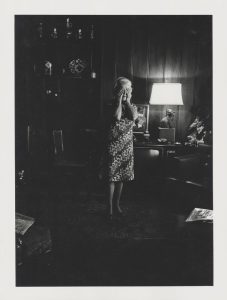





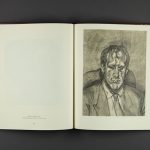
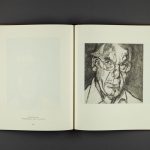
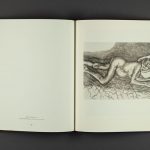


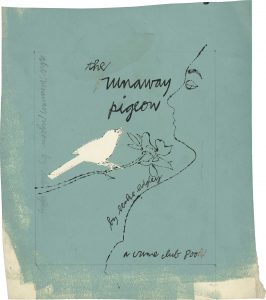



 +49 89 29 73 42
+49 89 29 73 42